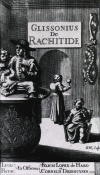A Brief History of Nutritional Rickets
- PMID: 31798536
- PMCID: PMC6867964
- DOI: 10.3389/fendo.2019.00795
A Brief History of Nutritional Rickets
Abstract
Since first described almost a century ago, vitamin D preparations have been successfully used as a public health intervention to prevent nutritional rickets. In this manuscript, we document the periods in history when nutritional rickets was described, examine early efforts to understand its etiology and the steps taken to treat and prevent it. We will also highlight that despite the wealth of historical data and multiple preventative strategies, nutritional rickets remains a significant public health disorder. Nutritional rickets has both skeletal and extraskeletal manifestations. While the skeletal manifestations are the most recognized features, it is the extraskeletal complications, hypocalcaemic seizure and cardiomyopathy that are the most devastating features and result in reported fatalities. Reviewing this history provides an opportunity to further promote recent global consensus recommendations for the prevention and management of nutritional rickets, as well as gain a greater understanding of the well-known public health measures that can be used to manage this entirely preventable disease.
Keywords: history; osteomalacia and rickets' diseases and disorders of/related to bone; public health; rickets; rickets prevention and control; vitamin D.
Copyright © 2019 Wheeler, Snoddy, Munns, Simm, Siafarikas and Jefferies.
Figures


References
Publication types
LinkOut - more resources
Full Text Sources

